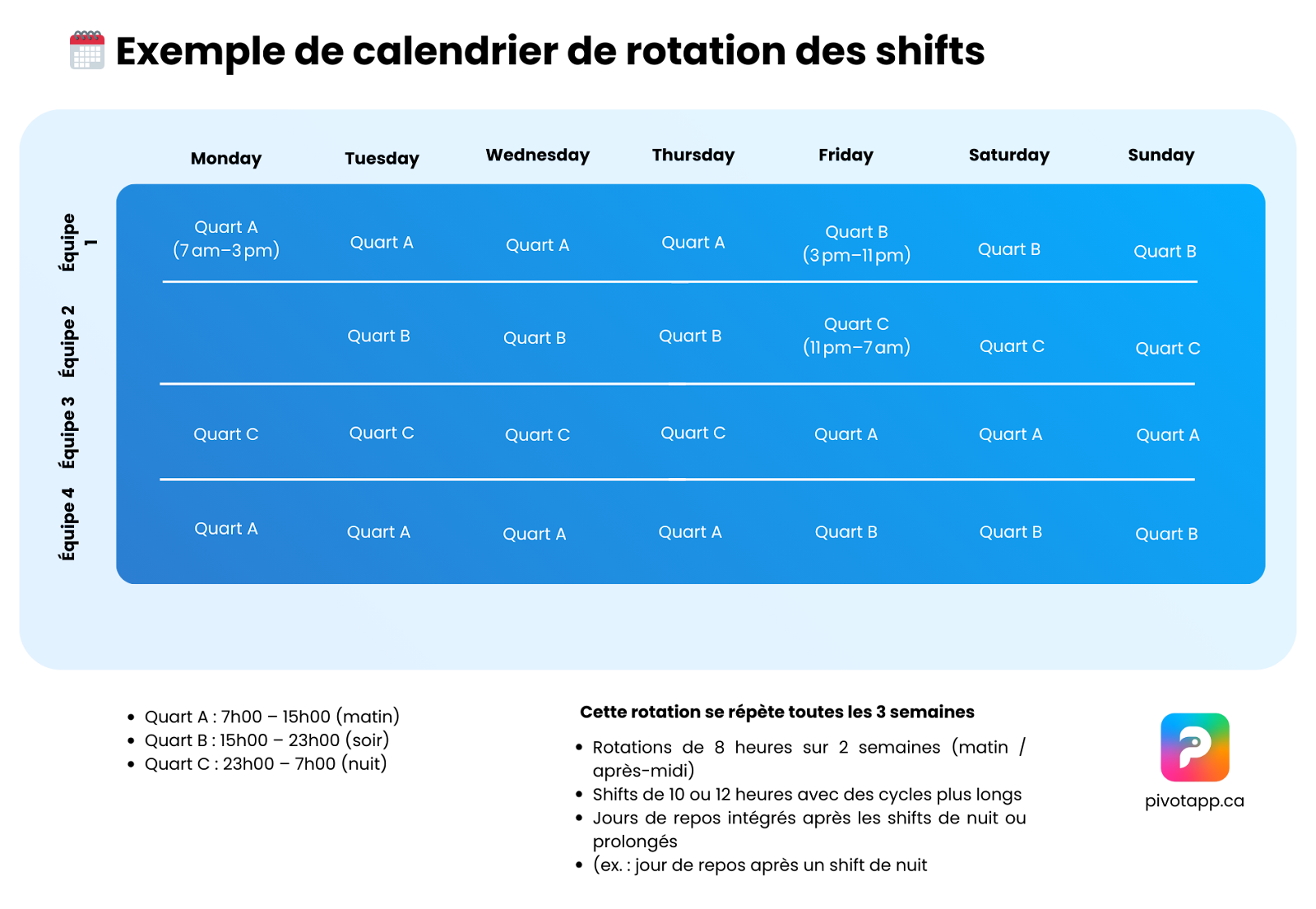Not everyone adapts to rotation. Some prefer mornings, others nights, depending on their obligations.
A hybrid approach often works better: some members have fixed schedules, others rotational.
For example:
- Let a waiter with children focus on morning shifts.
- Entrust closures to a student who prefers evenings.
Example of a rotating schedule (4-week cycle)

Three quarters types:
- At: 7am — 3pm (morning/opening)
- B: 15:00 — 23:00 (afternoon/evening)
- C: 23:00 — 07:00 (night/closing)
Weekly cycle:
- Week 1: A on weekdays, B on weekends
- Week 2: B on weekdays, C on weekends
- Week 3: C all week, A the weekend
- Week 4: A on weekdays, B on weekends
→ Then we start again
✅ Advantages:
- Fairness: everyone goes through every quarter
- Coverage: complete schedule, even on difficult quarters
- Training: exposure to all contexts and services
⚠️ Points of attention:
- Integrate rest days between extreme shifts (e.g. night → morning)
- Publish the schedule at least two weeks in advance
- Take into account personal constraints (childcare, 2nd job)
Best practices for setting up a rotating schedule
✅ Plan and communicate in advance
Define a cycle (weekly, bi-weekly, monthly) and share it at least 2 to 4 weeks before.
Be transparent: explain the reasons, the pros, the cons. Get feedback.
✅ Create a simple and consistent rotation
Put it in writing. Keep a pattern that is easy to remember (e.g. week 1 = morning, week 2 = evening).
Use a visual calendar or software (like Pivot) to automate.
✅ Choose the rotation before (morning → evening → night)
It's easier for the human body. Do not have it close and then open. Leave a day between two major quarters.
✅ Consider preferences
Ask employees for their constraints. Even if you can't satisfy everyone, recognizing their needs is important.
✅ Ensure true fairness
Check that profitable shifts (weekends, evenings) are well distributed.
Watch for imbalances: are the same ones always closing? Always the same on Sunday morning?
Rotate public holidays and overtime
✅ Support transitions
The first few weeks can be tough. Offer support:
- No training soon after a closure
- Encourage good sleep
- Simple gesture: free coffee after a late closure
✅ Invest in the right tools
Manual rotating planning is a source of errors. Software like Pivot:
- Automates rotation
- Detects rest offenses
- Allows supervised exchanges between employees
✅ Monitor and adapt
This type of schedule is not to be set in stone. Analyze the effects:
- Absenteeism rate?
- Level of satisfaction?
- Balanced workload?
Adjust as needed. Involve the team in the reviews. The system should evolve with your restaurant, not impose itself at all costs.

.avif)

.png)


